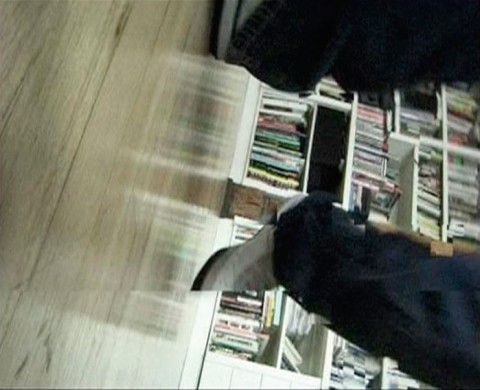While Scottish artist Douglas Gordon has developed a practice primarily based in video art and photography, his body of work is diverse and also includes sound, text, and installation art. In each of these genres, he has created diverse approaches to time, memory, and perception, using a range of techniques, such as repetition, doubling, mirroring, superimposition, and slow motion.
Born in September 1966 in Glasgow, Scotland, Gordon currently lives and works in Berlin, Glasgow, and New York. He studied art at the Glasgow School of Art from 1984 to 1988 and the Slade School of Fine Art, University College London, from 1988 to 1990. Subsequently, he became associated with the YBAs (Young British Artists)—a group of artists known for bold, provocative, and often irreverent practices based on a complete openness for the materials and processes from which art can be made—who rose to fame in the early 1990s. Gordon has gone on to win several prestigious awards over the course of his career, most notably the Turner Prize (1996), the Venice Biennial’s Premio 2000 award (1997), and the Hugo Boss Prize (1998).
One of Gordon’s best known works, 24 Hour Psycho (1993), came early in his career. Although he has created adaptations of several feature films, including William Friedkin’s Exorcist, Otto Preminger’s Whirlpool, and Martin Scorsese’s Taxi Driver, Gordon perhaps realized his most ambitious project in 24 Hour Psycho. He slowed down Alfred Hitchcock’s film Psycho so that it lasts an entire day or twenty-four hours. In this way, Gordon used time itself as both subject and medium, as the slow pace of the work calls attention to the relationship between real time and film time. 24 Hour Psycho also reveals a work within the series of stills from Hitchcock’s film. Viewers can observe intricate details in each shot and, in a sense, see a familiar, classic film anew.
In Play Dead; Real Time (2003), Gordon used repetition, two life-sized projections (front and rear), and a range of camera perspectives as part of an investigation into the dichotomies of control and free will, life and death, albeit through a circus elephant named Minnie. Gordon filmed Minnie from various angles as she obeyed a series of commands from an off-screen trainer. On two monumental screens, the viewer watches Minnie repeatedly play dead—drop to the floor, lie down on her side, and remain motionless—and then awkwardly struggle to rise only to go through the routine once again, seemingly trapped in a cycle of struggle. Play Dead ultimately recalls childhood memories of elephants in zoos and circuses as it reflects adult, real-world anxieties.
The film Zidane, un portrait du 21e siècle [Zidane: A 21st Century Portrait] (2006), which Gordon co-directed with fellow artist Philippe Parreno, also was filmed in real time using seventeen synchronized cameras. A documentary, the film focuses exclusively on soccer star Zinedine Zidane during a 2005 game between the Spanish Liga Real Madrid and Villarreal CF. The cameras, placed around the stadium, capture Zidane’s every gesture, movement, and expression in intimate close-ups and distant long shots. Together, the fragments of the various recordings do create a portrait of the footballer, but they also demonstrate how memory is a montage rather than a linear narrative.
Likewise, Domestic (2002) is a montage of views of (presumably) Gordon’s feet approaching the camera to repeatedly kick it across the floor of an apartment. The camera, and by virtual extension the viewer, continuously slams into various corners and objects in the space, then temporarily shuts down from the collisions. Rather than the safe familial surroundings implied by its title, the film presents jarring, violent views of a home. Like many of Gordon’s other videos, Domestic overturns traditional uses of video and manipulates media in simple but powerful ways that disrupt one’s perception of the familiar. —Kanitra Fletcher

